
About WGACAT
- Introduction
- Data Processing
- Revisions and Completeness
- Cross-identifications
- Quality
- High level products
- Results
- Access
Introduction
The large 2 degree field of view of the ROSAT PSPC makes it ideal as a survey instrument. Over the entire 4yr pointed phase of the ROSAT program approximately 18% of the sky has been covered to varying degrees of sensitivity. While the sky coverage is not complete, each observation has an exposure typically a factor of 100 longer than that achieved during the six month ROSAT all sky survey. The ROSAT PSPC pointed data is now all in the public domain, and provides a valuable resource for discovering new interesting X-ray sources, and undertaking survey programs. The value of such X-ray survey programs to provide insight into the nature of source populations has been demonstrated from surveys made using Einstein and EXOSAT to investigate e.g. extragalactic populations (Maccacaro et al. 1988, ApJ, 326,680; Giommi et al. 1991, ApJ, 378,77) and stellar coronae (Pallavicini et al. 1981, ApJ, 248,279), to name just two. The increased sensitivity of ROSAT provides a major new capability for these studies.WGACAT is a point source catalogue generated from all ROSAT PSPC pointed observations. This catalog has been generated by N.E. White (HEASARC/GSFC), P. Giommi (SDC/ASI) and L. Angelini (HEASARC/GSFC) and is a private research effort, not related to the official catalogs generated by the ROSAT project.
The WGACAT was made first publicly available in November 1994 through the HEASARC on-line service, with a first minor revision in March 1995 (WGACAT95 hereafter,White, Giommi and Angelini 1994, IAUCirc, 6100). It was generated using all the public ROSAT PSPC pointed data then available, corresponding to 75 % of the entire set, and featured ~ 68000 detections of which 62000 were unique sources. The current version, released in May 2000, is also the final and complete version of WGACAT. This includes the processing of the remaining sequences not included in the WGACAT95. WGACAT (May 2000) contains 88,000 detections, with more than 84,000 individual sources, obtained from 4160 sequences.
The catalog was generated using an optimized sliding cell detect algorithm in XIMAGE (first developed for the EXOSAT project). The inner and outer parts of the images were run separately, to maximize the sensitivity to source detection. This method is very sensitive in finding point sources, but can also find spurious sources where there is extended emission. We have visually inspected each detection, removed the obvious spurious cases and assigned a quality flag to each detection.
Data Processing
The catalog was generated using the ROSAT PSPC FITS event files. The processing of the ROSAT PSPC data was done using a c-shell script to run the XIMAGE X-ray image analysis package (available from the FTP anonymous on heasarc.gsfc.nasa.gov machine). The WGACAT first version (Nov 1994) and revision (Mar 1995) used the US FITS event files, as they were stored in the archive, and the German files after reformatting to the US FITS event format. All files were also time ordered to allow a time variability search. The event files used for the WGACAT95 were all REV1 data. In the spring of 1998, to complete WGACAT, the processing pipeline was run on the additional sequences not available in the archive when WGACAT95 was first generated. These second batch of sequences were mostly REV2 data.
| Versions | WGACAT (1995) |
WGACAT (2000 origin 1) |
WGACAT (2000 origin 2) |
WGACAT (2000 Total) |
|---|---|---|---|---|
| Number of Sequences | 3644 | 3635 | 517 | 4152 |
The ROSAT PSPC field was divided in two parts : the first includes the center of the field roughly up to the inner support structure at 19 arcmin radius. The second is the region outside the inner support and runs from 18 to 55 arc min. The background, point spread function and vignetting are very different for the inner and outer regions, and separating them gives a more sensitive source detection. The inner region was rebinned by a factor of 8, and the outer part by a factor of 20.
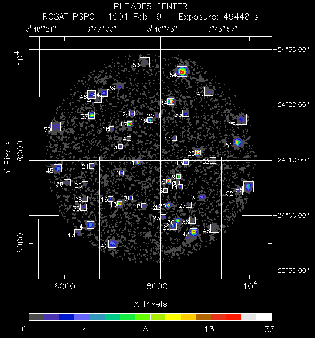
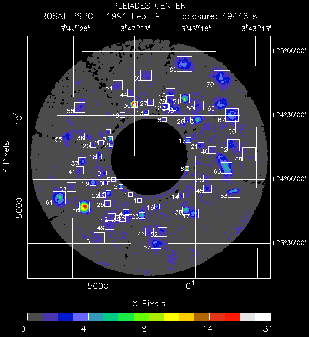
Fig 1. The inner region and outer region of the PSPC with
the detected sources overlaid. The field is the Pleiades (ROR 200008).
The increase in the point spread function is evident
and causes a blurring of the sources.
To better follow the rapid change of the PSF, a third region, including data from 9-20 arcmin, was added to the pipeline when the second batch of sequences was processed. The results from this third region is only available for sequences processed in 1998 not for sequences processed in 1994. This region is identified as the "in2" region. For all the detections hardness and softness ratios were calculated by splitting the PSPC band into three bands. For each detected source a chi**2 parameter related to the time variability has been calculated based on a KS test on the photon distribution. For each field and source a number of high level products were generated and they are described in the high level products section.
If a field was observed more than once, the same source may appear more than once in the catalog. If a source was observed on separate occasions in the inner region and in the outer areas, then its designation (see ROSAT NEWS No. 32) may be slightly different because of the lower positional accuracy in the outer region. Also nearby double sources may be blended in the outer region. It is advised, when possible, to always use the X-ray position determination for the detection nearest the center (the OFFSET parameter gives the off-axis position in arcmin).
Revision and Completeness
The May 2000 release of WGACAT contains the following revisions compared to the WGACAT95 :
- The quality check has been performed with a new scheme (see Quality section). All the individual detections have been visually inspected, and a new quality flag assigned.
- In WGACAT95, many good sources were flagged bad if they were detected in a-) fields containing bright extended emission or b-) in the overlap region between the inner and outer regions. Quality checks for fields containing bright extended emission was done on the whole field rather than inspecting each single detection. This resulted in flagging as bad also good sources. These sources now have been restored. In the overlapping region, the edge effects combined with the presence of the inner support structure cause a spurious peak in the number of detections. In the 1995 version, this problem was taken care by excluding all detections in the outer region at a radius less than 21 arcmin, which resulted in removal of a number of good sources as well. Such sources have been restored by inspecting individual detections and by supressing only double-counted sources between inner and outer regions. This new quality check resulted in the recovery of many sources. For the WGACAT95 the total point sources with quality flag higher than 5 is now 77154, compared to 68907 previously reported.
- Not all the ROSAT data were publicly available when WGACAT95 was released. To complete WGACAT, an additional set of 517 new sequences (mostly REV2 data) was processed (WGACAT2 hereafter). This new processing produced an addition of ~8890 sources with quality flag higher than 5. An extra parameter, ``ORIGIN'', has been added in the catalog to indicate whether the detection is from the first processing, used to create WGACAT95 (ORIGIN is set to 1), or from the additional processing, WGACAT2 (ORIGIN is set to 2).
- For detections obtained from REV1 data (mostly WGACAT95) any anomaly in the original file was investigated and compared with the corresponding REV2. The chi**2 test for variability, included in the WGACAT processing, was quite useful to reveal problems in the data and discover false sources. They were manifested as an exceptionally high variability associated with a source for a short time interval. These were typically caused by an incorrect assignment of the pointing direction in one of the time intervals included in a sequence, or due to the inclusion of a different pointing. In such cases the source detection and the variability are false and these detections have been removed by assigning a quality flag of 3. The total of 86 sequences (~2% of the total) have been affected by these problems.
- In WGACAT95 and WGACAT2, the distribution of good sources versus off-angle of the merged catalog showed a `lack' of sources between 12 arcmin and 17 arcmin offaxis radius. The PSF of the PSPC in the inner region of the detector is relatively steady, however at the edge of the inner region the PSF starts to degrade rapidly. The detection algorithm employed to generate WGACAT uses a fixed box-size for the entire inner region. This is reasonable up to ~ 12 arcmin where the PSF is almost constant, but a larger box size would be more appropriate after that. These ``missing sources'' are therefore due to the usage of a box-size optimized for the central region rather than the edge. To test that this was the cause of the ``missing sources'', the source detection was rerun in a portion of the inner region (at off-axis radius > 8 arcmin, using a larger box size. This resulted in 2577 additional sources, after excluding double-counted detections with existing "in" and/or "out" region sources, with quality flag higher than 5 that fill in the ``gap'' between ~12 arcmin - 17 arcmin offaxis. These sources are flagged in the parameter REGION as `i2', the position error has been assigned at 20 arcsec and the data products associated are identified by "in2" in their filename. This extra processing was done only for the new 517 sequences. It has not been run for the larger sample of sequences in WGACAT95. The current catalog has now 88621 sources with 84929 unique detection (unique is defined as sources are within 20 arcsec radius of each other), which includes the results from WGACAT95, WGACAT2 and the in2 processes.
- In the course of this revision process, we became aware of a problem with the coordinates for 345 sequences in WGACAT95. This was caused by an error in converting the header of the old format event files into RDF format. This error caused an offset in the source declination up to 1 arcmin. This problem has been corrected.
- Cross-correlations against other major catalogs have been rerun. Many of the catalogs used to cross-correlate WGACAT95 were updated and many new catalogs were available at the HEASARC. The total of 92 catalogs (in optical, infrared, radio, and X-ray) are now cross-correlated in the orders that can produce the best results.
- Parameters such as FXFO, IPC_PSPC_RATIO, IPC_PSPC_RATIO_ERROR, AOX, and ARO have been recalculated reflecting the updates and changes in the relevant parameters.
- The NH for each source position has been recalculated by utilizing the H I map by Dickey and Lockman (1990, Ann. Rev. Ast. Astr. 28, 215). The sky coverage of this map is complete in comparison with the Starke et al. (1984), used for WGACAT95, where the NH data were infeasible at Dec < -39 deg.
Cross identifications
A cross-correlation of the WGACAT against 92 major catalogs has allowed a preliminary identification of known optical, radio, X-ray and infrared objects. The results of the cross-correlation is included as parameters in the WGACAT. Only a small fraction of the WGACAT (about 20%) found matches in the major available catalogs.The catalogs used include:
- The Guide Star Catalog
- The Einstein EMSS, IPC, HRI and Slew surveys
- The EXOSAT HGLS catalog
- The EUVE catalog
- The HEAO 1 A3 catalog
- The ROSAT all-sky survey (bright source catalog), HRI (release Aug 99, with about 7500 firm sources), WFC catalogs
- The ROSAT PSPC source catalog by MPE (ROSATSRC)
- The van Paradijs X-ray Binary catalog (XRBCAT)
- The PMN, Dixon, Kuehr, VLA, PKS, MRC and the 6and 20cm North radio catalogs
- The Lyne Radio Pulsar catalog
- The IRAS PSC and FSC catalog
- The Abell, Zwicky, HCG, M31, LMC/SMC, and globular cluster catalogs
- The ngc2000, Huchra CfA Redshift, mcg, rc3, Hewitt and Burbridge QSO, Veron98, ESO Uppsala, extragalactic catalogs
- The Positions and Proper motions PPM, ACRS, HDEC, SAO, Variable Stars, Tycho, Hipparcos Catalogs, Herbig Emission-Line Star Catalog, CNS3 Nearby Stars (3rd Ed), the Bright Star, O, Carbon and Be Star catalogs
- The Downes and Shara Cataclysmic Variable Catalogs
- The MckSion White Dwarf catalog
- The Simbad source list provided to the ROSAT project
The full list of the cross-correlated catalogs are listed below using the names given in the HEASARC web based Browse. A detailed descriptions for these catalogs can be found at http://heasarc.gsfc.nasa.gov/W3Browse/.
The results of these correlations are written in various parameters for each database record. The parameters GSC, XID, OID and RID indicate if an identification has been made in the Guide star catalog or any of the X-ray, Optical and radio catalogs respectively (= 1 if it has). The table 1 lists all the cross-correlation results and compare with the cross-correlation in WGACAT95. Parameters like redshift, VMAG, and others have been written for any WGACAT detection if these values were available in the original in the catalogs used for the cross-identification. Derived parameters such as FXFO (the optical and X-ray flux ratio) are also given for WGACAT detection with an optical cross-identification. The FX is a simple conversion, and should be used with care since it depends on column density and source spectrum. The H I column density is derived from Dickey and Lockman (1990) map and recorded for each source.
Quality
The XIMAGE detection algorithm can also find spurious sources caused by extended and/or bright emission. As part of the processing a gif image was generated of the field with the detected sources overlaid, plus an individual thumbnail image of the source itself. These were used during the quality check of the catalog. Each source in the catalog have been visually inspected via these images, and when necessary the original data were re-analysed. Obvious spurious sources caused by large extended structures, spurious detection caused by an anomaly in the event files have been flagged, and removed from the public catalog. There may still be subtle problems caused by low level diffuse emission. The gif images have been made available as part of the catalog, to allow a further quality check by interested users. From the on-line WWW HEASARC databases system the gif images can be viewed by clicking on the hyperlink of the GIF products. We have assigned a quality flag of each detection. This is written in the parameter QFLAG, and ranges from 0 to 12. A brief description for each quality flag is as follows:
- A QFLAG of 12 indicates a secure detection of a point source.
- A QFLAG of 11 is assigned to good detection located near the inner detector support structure at ~20 arcmin radius.
- A QFLAG of 10 is assigned to good detection located near the outer edge of detector or near the support structure of the detector at offaxis > 20 arcmin radius.
- A QFLAG of 9 is assigned to good detections. This quality flag is used to indicate that the thumbnails have not an optimized rebinning for the source strength and the source appeared split with a separation of about 10 arcsec, well inside the 80% HPD of the PSF. These sources are mostly at large offaxis and low rate (< 1e-2 count/s).
- A QFLAG of 8 is assigned to good detection. This quality flag is used to indicate that the thumbnails have not an optimized rebinning for the source strength and the source appeared split with a separation less 5 arcsec, well inside the 80% HPD of the PSF. These sources are mostly at small offaxis and low rate (< 1e-2 count/s).
- A QFLAG of 7 indicates that the detection is located within bright background due to extended emission such as clusters, supernova remnants or near by bright X-ray binaries.
- A QFLAG of 6 indicates that the detection is good but it is weak source.
- A QFLAG of 5 indicates that the detection is good but the source may be extended or elongated.
- A QFLAG of 4 is assigned to spurious detection caused by nearby bright sources and to spurious detected located either at (or near) the inner/outer support structure or the edge of the detector.
- A QFLAG of 3 is assigned to specific case of false detection. These sources may result from a local arc in the detector caused by a temporary HV breakdown, interacting high energy particles, or by mystery pointing that interrupt the sequence. This flag also used as the indicator for supernova remnants that are extended over the field.
- A QFLAG of 2 indicates that the observation was taken within the first 2 months of the mission (June-July 1990) where the processing and satellite were unstable. It is also assigned to suppress one of the double-counted sources detected in between "in", "in2", and "out" regions.
- A QFLAG of 1 means a false detection caused by spurious detections to extended emission from bright supernova remnants or X-ray binaries within the field of view.
- A QFLAG of 0 means a false detection caused by spurious detections due to extended emission from clusters. Eight sequences have been accidentally processed in both the old and the new data sets. All entries in the old data set have been removed by assigning QFLAG = 0.
High level products
The processing produces for each sequence several products:- a smoothed intensity image in GIF format with boxes showing each detection
- a GIF format intensity image centered at each X/Y detected position
- a FITS format image used to run the processing (inner and outer region)
- a timing image (a new method for visualizing flux variations) in GIF format
- a color image in GIF format (showing hardness variation across the image)
- a GIF format lightcurve and background subtracted spectrum for each detected source
- a FITS format source spectrum and events file for each detected source
- an ancillary response file for each source
- a FITS format background spectrum for the inner and outer region
- a FITS format background event file (one for the inner and one for outer region) obtained by removing all sources detected
For each sequence two intensity maps are created one for the inner region (region descriptor CIRCLE(7860,7860,2295)) rebinned by a factor of 8 with a size of 656 X 656, and one for the outer region (region description CIRCLE(7860,7860,6660) - CIRCLE(7860,7860,2145)) rebinned by a factor of 20 with a size of 680. The maps are named as follows {xx}{nnnnnnn}_in.img or {xx}{nnnnnnn}_out.img, where xx is either rp for US data and wp for german data, nnnnnnn is the sequence number. An additional map (656 X 656 rebin by 8) is created by the in2 processing, run only on a limited number of sequences. The region description used is CIRCLE(7860,7860,2295)-CIRCLE(7860,7860,960) and the filenames follow the same convention of the others and are identified by "in2" (e.g. {xx}{nnnnnnn}_in2.img).
The colour image containing `colour` values, were calculated summing the PI value for each photon arrived at position x, y divided by 100 and normalized by the total count accumulated in that pixel. The maps are stored in GIF format. The GIF image contains on the left colour image and on the right the intensity image smoothed with overlaid the box of the detected sources together with a sky grid. The map are named as follow {xx}{nnnnnnn}_in_col.gif or {xx}{nnnnnnn}_out_col.gif (or {xx}{nnnnnnn}_in2_col.gif if available).
The timing images are a tool to help identify variable sources. The method consists in comparing the time arrival distribution of the photons collected in each pixel with the corresponding distribution of the entire image using a Kolmogorov-Smirnov (KS) test. The result of the KS test is a chi**2 value (with 2 d.o.f.) which is then used to assign an intensity value to each pixel. High intensity chi**2 values are assigned to pixels where the distribution of photon arrival times is not consistent with that of the entire image. The `time variability image` so constructed visually shows areas where strong time variations occurred. The map are named as follow {xx}{nnnnnnn}_in_time.gif or {xx}{nnnnnnn}_out_time.gif (or {xx}{nnnnnnn}_in2_time.gif if available).
For each sequence two sets of background file are available one for the inner region and for the outer region. Each set of background files include a background event file and a background spectrum. The inner background event file was obtained using the inner region descriptor (CIRCLE(7860,7860,2295)) and subtracting the contribution of all the detected sources. The outer background event file was obtained using the outer region descriptor (CIRCLE(7860,7860,6660) - CIRCLE(7860,7860,2145)) and subtracting the contribution of all the detected sources within that region. The box size used to subtract the source contribution is stored in the parameter HALF_BOX. The inner and outer background spectra are obtained using all the data in the inner or outer background event file respectively. The files are named as follow {xx}{nnnnnnn}_in_bg.evt and {xx}{nnnnnnn}_in_bg.pha or {xx}{nnnnnnn}_out_bg.evt {xx}{nnnnnnn}_out_bg.pha. Background files, event and spectral, are also available for the in2 region only on a limited number of sequences obtained removing all sources from the region CIRCLE(7860,7860,2295)-CIRCLE(7860,7860,960). They are named as {xx}{nnnnnnn}_in2_bg.evt and {xx}{nnnnnnn}_in2_bg.pha.
A spectrum and an event file for each detection are also available. These have been extracted using the optimize box size (see parameter HALF_BOX). The spectra are not background subtracted or rebinned. The 256 channels have been grouped in 32 channels. For each spectrum there is also available an ancillary response file created using the 'pcarf' software (see ROSAT package in the FTOOLS distribution). The response file used to generate the arf is written in the spectrum in the keyword RESPFILE. Spectrum, event file and ancillary response file are in FITS format. The naming convention used is {xx}{nnnnnnn}_{region}_{in_no}.{ext} where xx and nnnnnnn as the same meaning as listed above, region has value either 'in' or 'out' or 'in2', id_no has the value of the parameter ID_NO, and ext has value 'pha', evt and 'arf' for spectrum, event file and ancillary response.
A background subtracted spectrum and lightcurve plots are provided in GIF format. The spectrum plot has been obtained by reading into XSPEC source spectrum the appropriate background spectrum ('in' for an inner region source, 'out' for an outer region source and 'in2' for the 9-20 arcmin region), the response matrix and the ancillary file. The lightcurve plot consists in two panels containing the source (top) and the background lightcurves (lower). It has been created running XRONOS on the source event file and the appropriate background event file, using a binning of 300 seconds (occasionally 500 seconds was used). The source lightcurve shown is NOT background subtracted. The name convention used is {xx}{nnnnnnn}_{region}_{in_no}_evt.gif and {xx}{nnnnnnn}_{region}_{in_no}_pha.gif.
Results
The final version of WGACAT contains more than 80000 sources, these are 20000 more sources compared to WGACAT95 (table).
| Detections | WGACAT (1995) |
WGACAT (2000 origin 1) |
WGACAT (2000 origin 2) |
WGACAT (2000 total) |
|---|---|---|---|---|
| Total (QFlag 0-12) | 98326 | 98326 | 17636 | 115962 |
| Good (QFlag 5-12) | 68907 | 77495 | 11467 | 88579 |
| Good (distinct) | 66552 | 74678 | 11312 | 84925 |
Figure 2 shows an aitoff projection of all the detected sources. The sky distribution reflects the pointings, rather than that of any intrinsic population. It shows little bias towards the galactic place. The number of sources detected at low galactic latitudes (less than 20 degrees) is about 21000, compared to 67000 at high latitudes.
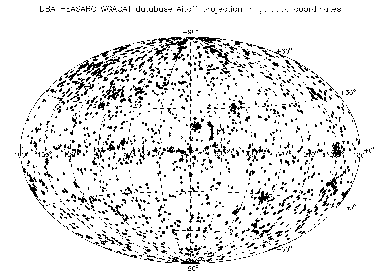 Figure 2
Figure 2
Figure 3 and 4 show for the sample of good WGACAT sources the distribution of the signal to noise (solid line) compare with the same distribution for the previous version of the catalog (WGACAT95 dash line) and the probability that the detection is due to a random fluctuation. The detection threshold was set to accept all sources with a signal to noise ratio greater than 2 and a Poisson probability less than 1.0E-04.
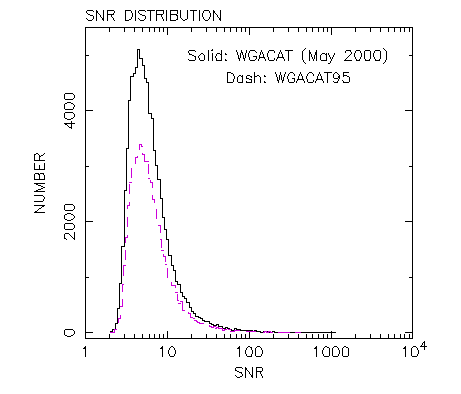

Figure 3 & 4
The exposure distribution for the entire catalog from 100s up to 100,000s, with the vast majority of exposures in the range 5,000 to 30,000s.
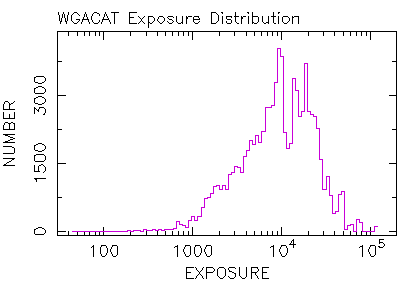 Figure 5
Figure 5
The count rate distribution (Fig 6) ranges from 0.0005 up to about 100 ct/s, with the peak of the distribution around 0.008 ct/s. The shape of the distribution does not change compared WGACAT95 (dotted line).


Figure 6 & 7
These counting rates have been corrected for the telescope vignetting at 1 keV, the point spread function and exposure. They have not been corrected for the detector ribs. The count rate distribution as a function of offaxis angle, shown in Figure 7, has a peak at offsets less than 2 arc minutes, which is where the target was placed. The detection threshold increases as the offset angle increases, because of the telescope vignetting and increase in the size of the point spread function.


Figure 8 & 9
Colour images that indicate the colour of each pixel (i.e. the average energy of all photons detected in that pixel) have been produced by calculating the mean of the PHA distribution at position x,y and rescaling it between 0 and 100.
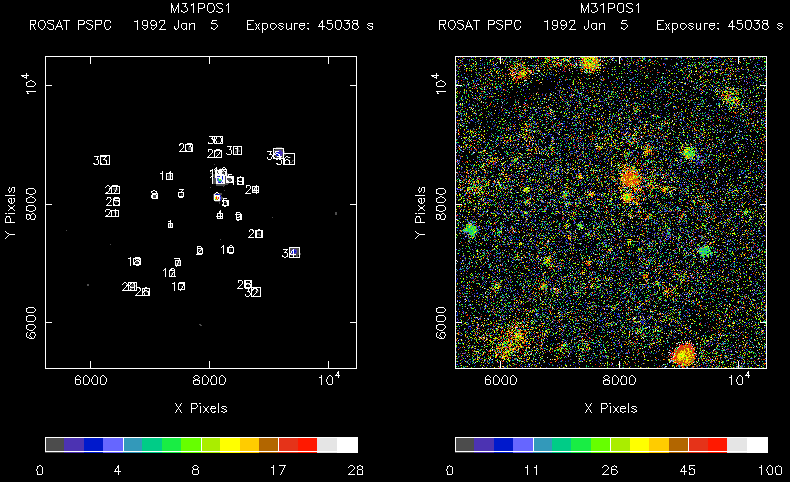 Figure 10
Figure 10
The maps are stored in GIF format and an example is shown in Figure 10 from an observation of M31. The colour image is on the right, with red indicating harder and blue softer sources. For comparison the intensity image is on the left, with the detected sources overlaid. The different spectral hardness is evident for each source. There are at least three very soft sources and two that are harder.
We have introduced timing images as a new tool to help identify variable sources. The method consists in comparing the time arrival distribution of the photons collected in each pixel with the corresponding distribution of the entire image using a Kolmogorov-Smirnov (KS) test. The result of the KS test is a chi2 value (with 2 d.o.f.) which is then used to assign an intensity value to each pixel. In this way pixels where the distribution of photon arrival times is not consistent with that of the entire image will be assigned high intensity values (high chi2 values).
 Figure 11
Figure 11
The image so constructed (time variability image) will visually show where strong time variations occurred. In Figure 11 a time variability image of the M31 field is shown. A highly variable source (no 34) is evident in the right hand image as a bright object. The lightcurve of this source shows a transient outburst.
 Figure 12
Figure 12
 Figure 13
Figure 13
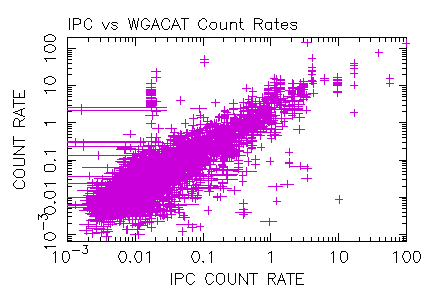 Figure 14
Figure 14

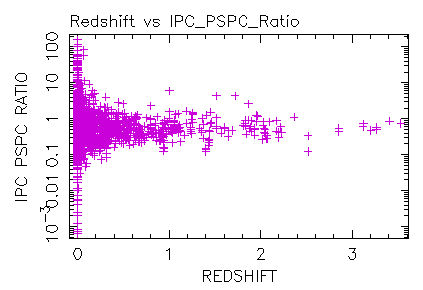 Figure 15 & 16
Figure 15 & 16